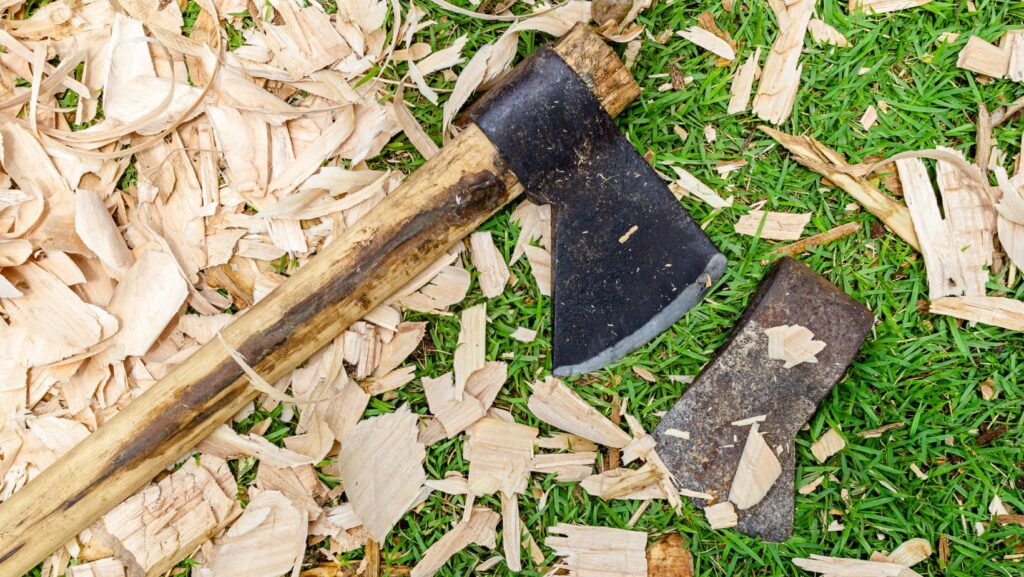Embarking on a backpacking adventure? There’s one tool you shouldn’t overlook – the backpacking hatchet. Compact yet mighty, this versatile tool can make the difference between a smooth journey and a challenging trek.
Whether you’re splitting firewood, cutting ropes, or fending off wildlife, a reliable hatchet is an outdoor enthusiast’s best friend. Let’s delve into the fascinating world of backpacking hatchets, exploring their features, uses, and essential buying tips.
Stay tuned as we chop down the myths and carve out the facts about this indispensable wilderness companion. This article is your guide to choosing the best backpacking hatchet for your next adventure.
Diving deeper into the significance of a backpacking hatchet, it’s crucial to understand its different aspects – weight, size, material and construction quality. These components elevate a backpacking hatchet from a simple cutting tool to a versatile outdoor necessity.
Backpacking Hatchet
The Importance of Weight and Size
The weight and size of a backpacking hatchet hold high significance. Being a tool intended for regular outdoor use, lightweight and compact features turn into  key selling points. They ensure comfortable carry and storage, reducing the overall backpack load. For instance, a hatchet weighing around 1.5 pounds and having a length of 14 inches fits conveniently into most backpack pockets without inducing extra strain during long hikes.
key selling points. They ensure comfortable carry and storage, reducing the overall backpack load. For instance, a hatchet weighing around 1.5 pounds and having a length of 14 inches fits conveniently into most backpack pockets without inducing extra strain during long hikes.
Additionally, the size correlates directly with the tool’s performance. A smaller hatchet provides precision in tasks like carving and chopping small branches. In contrast, a longer handle and larger blade offer leverage and swing power, suitable for splitting larger logs or defending against wildlife.
Material and Construction Quality
The material and construction quality of a backpacking hatchet are crucial determinants of its durability and functionality. Most high-quality hatchets use materials like carbon steel for the blade and hickory or fiberglass for the handle. Carbon steel blades have exceptional durability and sharpness, making them ideal for rigorous outdoor jobs. Hickory handles, on the other hand, absorb shock well and provide comfortable grip, while fiberglass handles offer more durability and weather resistance.
Furthermore, construction quality directly influences a hatchet’s longevity. For instance, hatchets made with a full-tang design, where the blade material extends into the handle, offer increased strength, stability, and balance. Manufacturers providing lifetime warranties or quality assurance symbols also indicate superior construction quality.
Thus, comprehending these aspects elucidates the role of a backpacking hatchet in outdoor adventures. It stands not merely as a tool but as an essential companion in wilderness exploration.
Top Features to Look for in a Backpacking Hatchet
Blade Sharpness and Durability
Recognizing the importance of blade sharpness and durability in a backpacking hatchet reveals an investment in a tool that functions reliably. Consider hatchets with carbon steel blades. These blades are known to retain their sharpness longer than blades made of other materials. Additionally, their high endurance to stress indicates a reduced likelihood of chip or break, reinforcing their durability. To exemplify, Gerber Bear Grylls Survival Hatchet stands out with its sharp and robust carbon steel blade.
Handle Grip and Ergonomics
A grip that ensures comfort and firm handling is a must-have feature in a backpacking hatchet. True ergonomics lies in handles crafted from materials like hickory or fiberglass. Such materials provide the hatchet with not only a comfortable grip but also the ability to withstand high-impact blows without causing discomfort to the user. As an example, Estwing Sportsman’s Ax provides an ergonomic leather grip that offers both comfort and control during use.
Safety Features
Safety, no doubt, is as important as the hatchet’s functionality itself. Mandatory safety features include a protective sheath for the blade and a non-slip grip handle. The sheath covers the blade when not in use, mitigating the risk of accidental cuts. Meanwhile, a non-slip handle aids in avoiding accidental release of the hatchet, especially during sweaty or rainy conditions. The Fiskars X7 Hatchet is a suitable instance, carrying safety features including a sturdy blade cover and an anti-slip grip.

